
United States Forces Japan (USFJ) is a subordinate unified command of the United States Indo-Pacific Command (USINDOPACOM). It was activated at Fuchū Air Station in Tokyo, Japan, on 1 July 1957 to replace the Far East Command. USFJ is commanded by the Commander, US Forces Japan (COMUSJAPAN) who is dual-hatted as commander of the Fifth Air Force. U.S. Forces Japan is currently headquartered at Yokota Air Base in Tokyo.

Yomitan is a village located in Nakagami District, Okinawa Prefecture, Japan.

Kadena Air Base is a highly strategic United States Air Force base in the towns of Kadena and Chatan and the city of Okinawa, in Okinawa Prefecture, Japan. It is often referred to as the "Keystone of the Pacific" because of its highly strategic and geographic location. It is located just 650 km off the coast of China and at a distance of just 770 km from Shanghai, a major economic hub. It is home to the USAF's 18th Wing, the 353rd Special Operations Group, reconnaissance units, 1st Battalion, 1st Air Defense Artillery Regiment, and a variety of associated units. Over 20,000 American servicemembers, family members, and Japanese employees live or work at Kadena Air Base. It is the largest and most active U.S. Air Force base in East Asia.

Giretsu was an airlifted special forces unit of the Imperial Japanese Army formed from Army paratroopers, in November 1944 as a last-ditch attempt to reduce and delay Allied bombing raids on the Japanese home islands. The Giretsu Special Forces unit was commanded by Lieutenant General Michio Sugahara.
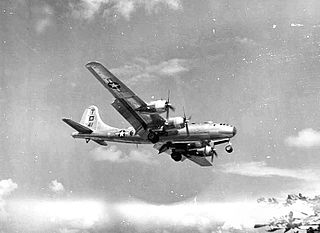
The 498th Nuclear Systems Wing was a wing of the United States Air Force based at Kirtland Air Force Base, New Mexico.

The 346th Bombardment Group is a former United States Army Air Forces unit. It was last assigned to the 316th Bombardment Wing at Kadena Airfield, Okinawa, where it was inactivated on 30 June 1946. The group was originally a heavy bomber training unit, but was inactivated in a general reorganization of Army Air Forces training units in 1944. It was reorganized as a Boeing B-29 Superfortress group later that year. It moved to Okinawa in 1945, but arrived too late to participate in combat.

The 1st Fighter Squadron is an inactive unit of the United States Air Force. It was most recently based at Tyndall Air Force Base, Florida, where it operated McDonnell Douglas F-15C Eagle aircraft conducting advanced fighter training.
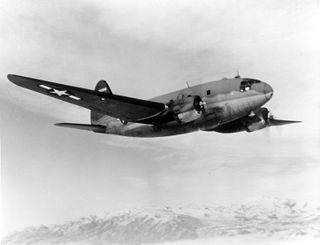
The 2d Combat Cargo Group is an inactive United States Army Air Forces unit. The unit was organized at Syracuse Army Air Base in New York. It operated during World War II in the Southwest Pacific, transporting passengers and cargo. Its last duty station under this designation was Yokota Air Base, Japan, where it was inactivated on 15 January 1946.
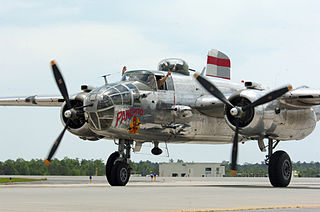
The 41st Tactical Group is an inactive United States Air Force unit. Its last assignment was with the 7217th Air Division at Cigli Air Base, Turkey, where it was inactivated in 1970. From 1966 to 1970 the group controlled deployed fighter squadrons.

The 435th Bombardment Squadron, also known as the "Kangaroo" Squadron, is an inactive United States Air Force unit. It was last assigned to the Eighth Air Force 333d Bombardment Group, based at Kadena Air Base, Okinawa. It was inactivated on 28 May 1946.
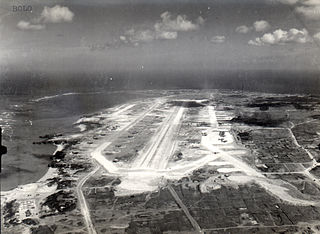
Bolo Airfield is a former World War II airfield at Naval Base Okinawa in Okinawa, at Bolo Point on the East China Sea coast. The airfield was inactivated after 1946 and returned to Japanese control in 1972. Currently, it is a part of Yomitan village, where it has been redeveloped into a golf course and recreation area.
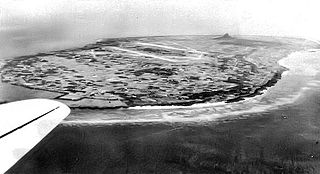
Ie Shima Auxiliary Airfield is a training facility, managed by the United States Marine Corps and a former World War II airfield complex on Ie Shima, an island located off the northwest coast of Okinawa Island in the East China Sea. The airfield as such was inactivated after 1946 but part of the former airfield is still used as a training facility for parachute drops and vertical take off and landing aircraft such as the F-35. The facility is referenced as FAC6005 by Okinawa Prefecture.

The 820th Bombardment Squadron is a former Army Air Forces unit, inactivated on 4 January 1946. The squadron was first activated during World War II as the 521st Bombardment Squadron. The squadron was soon engaged in the antisubmarine campaign off the Atlantic coast of the United States as the 16th Antisubmarine Squadron.

The 865th Technical Training Squadron is an inactive United States Air Force unit. Its last assignment was with the 1st Missile Division at Redstone Arsenal. Alabama, where it trained Italian Air Force personnel on the SM-78 Jupiter. It was inactivated on 1 November 1959.

The 866th Bombardment Squadron is an inactive United States Air Force unit. Its last assignment was as the 866th Technical Training Squadron with the 1st Missile Division at Redstone Arsenal, Alabama, where it trained for overseas deployment the SM-78 Jupiter. It was inactivated on 25 May 1962.

The 868th Tactical Missile Training Squadron is an inactive unit of the United States Air Force. Its last assignment was with the 868th Tactical Missile Training Group, at Davis Monthan Air Force Base, Arizona, where it conducted training with the BGM-109G Gryphon. It was inactivated on 31 May 1990.

The 928th Expeditionary Air Refueling Squadron is a provisional unit of the United States Air Force. It is assigned to Air Mobility Command to activate or inactivate as needed for contingency operations.
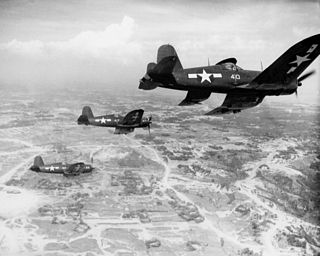
The Tactical Air Force, Tenth Army (TAF) was a joint aviation command of the Tenth United States Army that was responsible for commanding all land-based aviation and aviation command and control units during the Battle of Okinawa. The TAF's headquarters was provided by the 2nd Marine Aircraft Wing and it was the largest joint aviation unit under Marine Corps command during World War II. During the battle, the TAF was commanded by Major General Francis P. Mulcahy until ill-health forced him to be relieved by MajGen Louis E. Woods. According to United States sources, TAF aircraft were responsible for shooting down 637 Japanese aircraft during the battle.

The Raid on Yontan was an Empire of Japan military operation carried out on the night of May 24-25, 1945 against Yontan Airfield on Okinawa. The airfield had been recently seized by American forces during the first day of the Battle of Okinawa and was being used by United States Marine Corps and Army Air Force squadrons. Five Imperial Japanese Army Mitsubishi Ki-21 bombers, carrying Giretsu Kuteitai special airborne attack troops, conducted a suicide raid against Kadena and Yontan airfields on Okinawa. Four were shot down, but the fifth belly landed on the principal runway at Yontan allowing 10-12 giretsu troops to disembark on the airfield. The raid resulted in the destruction or damaging of 38 American aircraft and 70,000 gallons of fuel however its overall value was minimal because Yontan Airfield was reopened at 0800 the following morning with little effect to overall allied aviation operations.
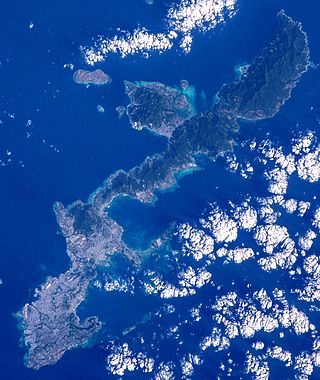
Naval Base Okinawa, now Naval Facility Okinawa, was and is a number of bases built after the Battle of Okinawa by United States Navy on the Okinawa Island of Japan. The naval bases were built to support the landings on Okinawa on April 1, 1945, and the troops fighting on Okinawa. The Navy repaired and did expansion of the airfields on Okinawa. United States Navy Seabee built or repaired the facilities on the island. The bases on Okinawa put the United States Armed Forces only 350 miles from Japan's home islands. Most facilities closed after the war, but some are still in use today in all branches of the United States Armed Forces.





















